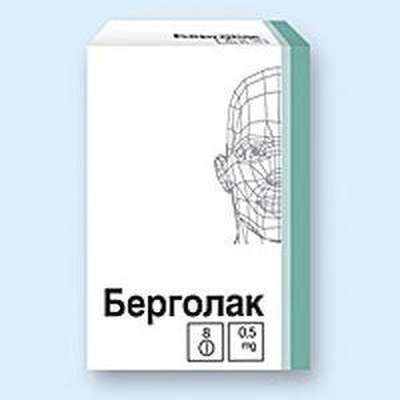Parasomnias
22 Oct 2016
Somnology Dr. Doping says sleep disorders, sleepwalking and night eating syndrome.
Experts rarely affect parasomnias problem, and the term itself sounds a bit strange. Doctors, when they hear the word "parasomnia" not scared, but fear that we are talking about some very difficult conditions, which is not easy to understand.
Parasomnias - a group of specific sleep disorders, which are characterized by unusual behavior, feelings, or other events. These phenomena occur due to the different sleep states: Greek para - «something that is near," in Latin somnus - «dream». That is all the unusual events, which are grouped around sleep, either at bedtime or during sleep or after. Parasomnias - a pool of different states, they may have a totally different clinics and different perceived.
To improve your sleep – buy Phenibut.
Currently in clinical practice we use the classification, which was proposed in 2014. According to this classification, there are three different groups of parasomnias by the way in which they occur during sleep. There parasomnias group, which arise in connection with the phase of a slow (long-wave) sleep. Another group only occurs in REM sleep state, or sleep with rapid eye movements. There is another group of "other parasomnias," the nature of which is unclear, is still unclear, they need to be associated with any disease. Now scientists are looking to define these groups of sleep disorders.
In real life, the most common form of parasomnias, which is associated with slow sleep. It sleepwalking, confusion awakening and night terrors. They are called waking disorders. The occurrence of such conditions associated with the fact that the brain does not have time time to switch from the phase of deep, slow-wave sleep in active wakefulness. There are unusual phenomena that are often not understood by the man himself, because at this time he continued to sleep. A large part of his brain is in a state of sleep, while a smaller part wakes up and issues an unusual phenomenon.
For example, there is a circulation disorder in his sleep. Speaking figuratively, wake up legs, lead somewhere, but the man continues to sleep and in the morning, waking up completely, does not remember what happened to him at night, because all this time, he slept.
Another variation of this form of parasomnias called night terrors - a situation that often happens at children: the middle of the night a piercing cry, the parents run into the child's bedroom, they saw that the child is sitting on the bed, all the shaking, eyes open as if in terror, parents try to hug him, to soothe the child sees and shouts something unintelligible. It is also a form of arousal disorders related, if figuratively say, that awake feelings affect appears shouting, autonomic manifestations of excitement. But at this time the child is in a state of sleep, he does not give a report on its activities in the morning and does not remember anything about it.
The third form of parasomnias in the group called confusion awakening or a sleepy drunk syndrome. It is a condition that occurs during the transition from the phase of deep sleep to wakefulness and is accompanied by difficulty concentrating, perception of the environment. It is after some time passes, and the man finally wakes up and begins to perceive all adequately. Why is this happening? Again, those structures of the brain that are responsible for processing information for the focus of attention, with the postponement of the information in the memory, not yet awake. Behaviorally people already awake: he got up, went somewhere, maybe even eat. But this it is likely then not remember, because his mind is not yet fully switched from a sleep state to a state of wakefulness.
Another more unusual form of this group of parasomnias - syndrome disorders night behavior or night eating syndrome, when a man finds himself in the morning smeared chocolate or in the morning goes to the refrigerator, looking - and refrigerator empty. Where all go? Man ate all night. In fact, this form of sleepwalking with simultaneous absorption of food. In the morning the man does not remember that night he got up, automatically I went to the refrigerator, ate, came back. In the brain, there is the same situation: some brain structures continue to sleep, but rather a large part of the brain, providing coordinated behavior: getting up, going through ten rooms to the kitchen, opening the fridge, smearing butter on bread - all this is done, but it is not stored, because what happens in the dream state.
With these four forms of parasomnias, which are associated with a phase of slow wave sleep, especially dealing children's doctors: pediatricians, pediatric neurologists, because most cases of sleepwalking occurs just at children. The nervous system of the child mature enough to make the whole brain had time to completely switch from a sleep state to a state of wakefulness. There are deferred such events, the occurrence of a phenomenon later than the other. What is the reason? It is believed that the role played by genetic factors, because it is seen that in some families, and parents, and the children repeated parasomnias in this group, and parents as a child may experience sleepwalking, their son - night terrors, his sister - confusion awakening. It is believed that the legacy of the difficulty of switching from a deep, slow-wave sleep to wakefulness, but manifest violation of switching can in different ways.
The form of sleepwalking, which is called the syndrome of eating disorders, occurs more often in adults. With this disorder deal adult neurologists and psychiatrists, and this state is regarded as mental, because man does not realize that he was doing. The reason for this disorder is still unclear.
How often sleepwalking occurs in the pediatric population? It is believed that somewhere in 8-10% of children (children's age, according to some sources, up to 15 years, on the other - to 18 years, but we are talking about children under 15 years) have a disorder associated with a slow dream: sleepwalking, night terrors and confusion awakening.
Among adults, sleepwalking is very rare, less than 1%. With maturation, the strengthening of the nervous system, these unusual phenomena of sleep come to naught. This ends up to fourteen years, that is, to the time of puberty - slightly earlier in girls, boys later. When the brain is approaching adulthood, these types of parasomnias are terminated.
What should be done if a person is suspected in the most famous form of parasomnias, such as sleepwalking? Doctors often prescribe EEG, because the main thing in this case - to exclude more serious neurological disorder called epilepsy. It is manifested by various torments: it not only fits, when a person is and his batters, as it may be psychomotor seizures - also called ambulatory paroxysms. The man begins an attack, he can get up, walk away and do not remember it, or give a very strong affect: scream, excitement, similar to the condition of a strong fright.
Epilepsy - is a serious disease that should be treated in many cases for life. First of all we must eliminate this cause. To do this, conducted the EEG recorded the electrical activity of the scalp, which can show whether there is any area in the brain that produces the wrong wave, and may from time to time to include the entire brain, producing such an altered state of consciousness or not. If necessary, the EEG is carried out in a state of sleep, as sometimes during the day, this abnormal activity is not visible, as in a dream manifested in all its glory.
If the pathology is not possible, then they are doing in this case? Usually they do not do anything. Doctors recommend to provide a safe environment, so that the child did not run off somewhere, do not hit and did not fall, to wait, when it's puberty and everything goes. Doctors rarely prescribe very serious some drugs only if fits very intense or very frequent. Then it is necessary to suppress them artificially.
At night eating syndrome, adult disorder, the treatment has not yet been developed, and often antidepressants are appointed. Doctors suggest that the syndrome - the solution of internal problems through the adoption of food, it is one of the most ancient mechanisms available to man. There is a saying - "seize stress". Man at night often spontaneously goes and eats. Indeed, later identified some problems in relationships with others, self problems lead to an incorrect assessment of their place in this world. In humans, increased stress levels, their constant gnawing anxiety in the dream they may inadvertently reduce the level of anxiety, stress seizing.
There is a second group of parasomnias, which are associated with a rapid sleep. In this phase, people often see dreams. Some forms of parasomnias reflect this process of seeing dreams. For example, among older people, there is a common sleep disorder - a disorder of behavior in a fast sleep. Violated switch from REM sleep in the waking state: the person has a dream, but a vision leads to the fact that if he was dreaming some deep sleep, his physical activity disinhibited. In the dream, the man gives the content of his dream if he dreams that he is running, start the characteristic movements of the feet; if he dreams that he is fighting with someone, you might well call his neighbor on the bed. And often do patients come to the doctor complaining and beaten wife lead them, to help them.
This disorder is due to the fact that some people have disrupted normal muscle tone. Normally, each of us sees the dream, but do not realize the surrounding of it, because when we dream, our muscle activity is completely switched off. Under certain conditions the elderly muscle activity during the dream is broken, and the man gives a partial picture of his dream. Very characteristic is that then he can tell you why he did it, what a dream saw that he dreamed a dream. These disorders are very well remembered.
In studies experts showed that the presence of improper transfer of dreaming in the wake is a predictor that is a factor that increases alertness, - subsequently, a person may develop a certain neurological disease such as Parkinson's disease - is one of the most common neurological diseases occurring in the elderly. It was shown that Parkinson's disease may begin with such unusual behavior during sleep.
Thus, parasomnias - this group is very diverse in its phenomenology states, united only by their relation to the sleep state. There are other forms of parasomnias, such as the exploding head syndrome who do not understand what you need to communicate with some form of disease, whether from sleep to wakefulness switch violation or vice versa. Such forms are combined into a group of other parasomnias. Experts still accumulate enough data to form a new category of parasomnias, when it becomes clear why these conditions occur.

 Cart
Cart





